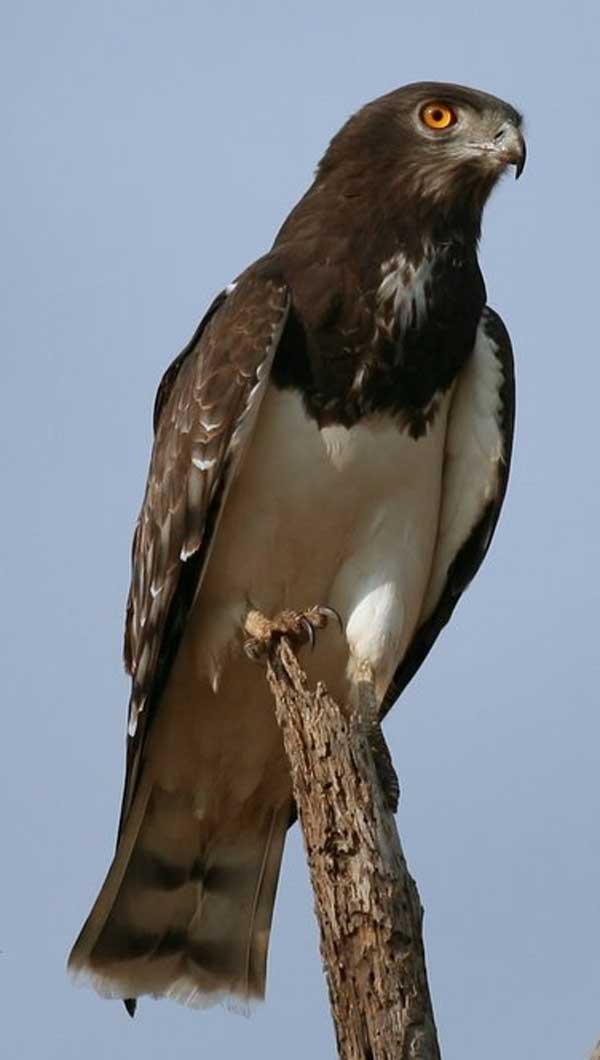Circaetus pectoralis (*) Cladus: Eukaryota Name Circaetus pectoralis A. Smith, 1829 References * IUCN link: Circaetus pectoralis A. Smith (Least Concern)
The Black-chested Snake Eagle (Circaetus pectoralis) is a large African bird of prey of the Accipitridae family. It resembles other snake-eagles and was once believed to be conspecific with the Short-toed Snake Eagle and Beaudouin's Snake Eagle. The main identification character of this bird is its dark brown head and chest, to which it owes its name. In flight the dark head contrasts with the underparts and underwings, which are white apart from dark barring on the flight feathers and tail. The upperparts are dark brown, and the eye is yellow. The female is similar to, but larger than the male, and the juvenile is rufous. The call is a whistled kwo kwo kwo kweeoo. This species can be found throughout southern Africa from Ethiopia and Sudan in the north to South Africa in the south and Angola in the southwest. It inhabits different habitats, providing it can find open terrain to hunt on, trees to perch and nest in, and sufficient food supply. This includes semi-arid or even desert areas. As its name indicates, this bird feeds mostly on snakes, but will also prey on lizards, small mammals and frogs. The female will lay only one egg per clutch, which is incubated for 50 days. The chick leaves the nest after 3 months. Due to its wide distribution this species is not endangered. BirdLife International (2006). Circaetus pectoralis. 2006. IUCN Red List of Threatened Species. IUCN 2006. www.iucnredlist.org. Retrieved on 12 May 2006.
Source: Wikipedia, Wikispecies: All text is available under the terms of the GNU Free Documentation License |
|

